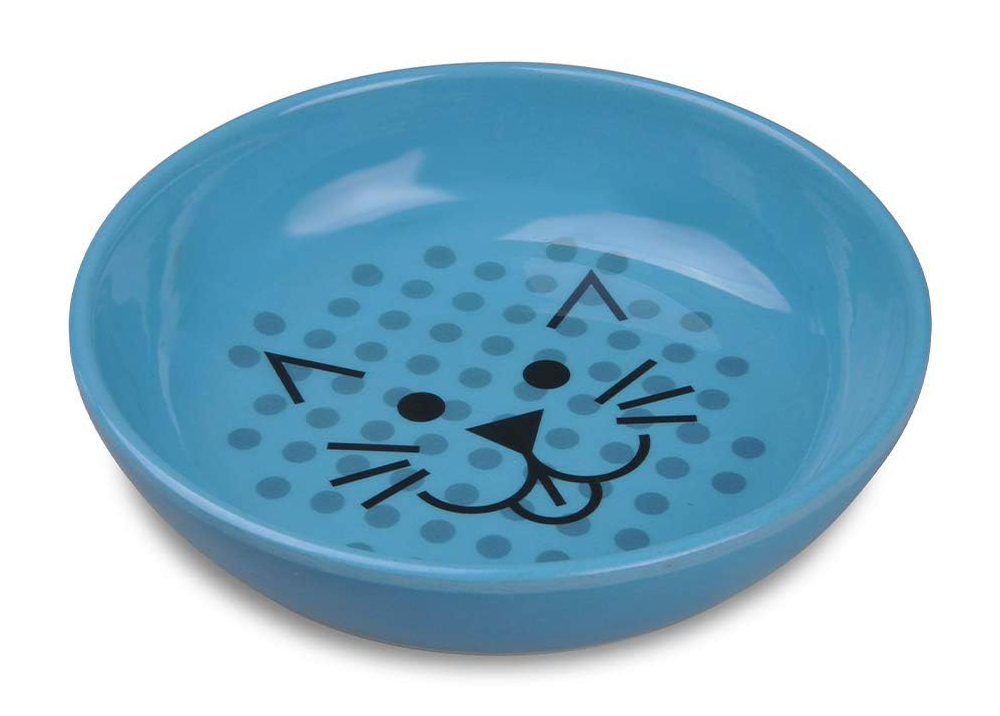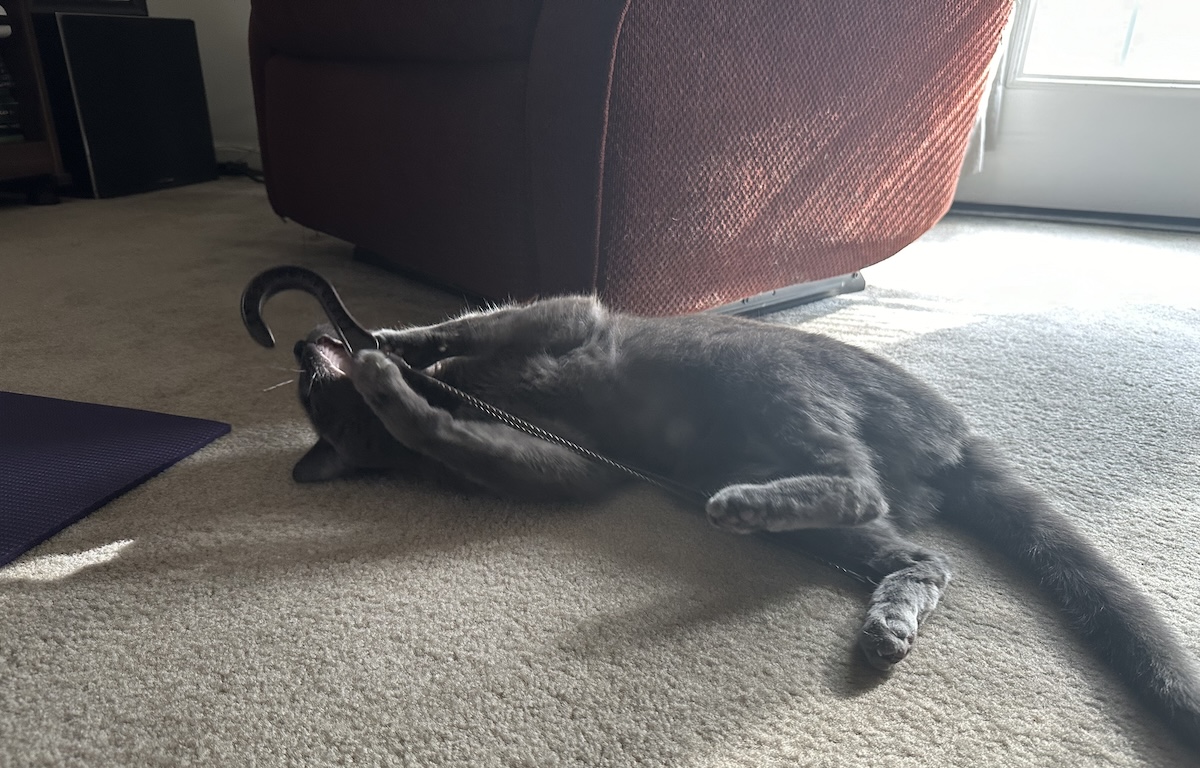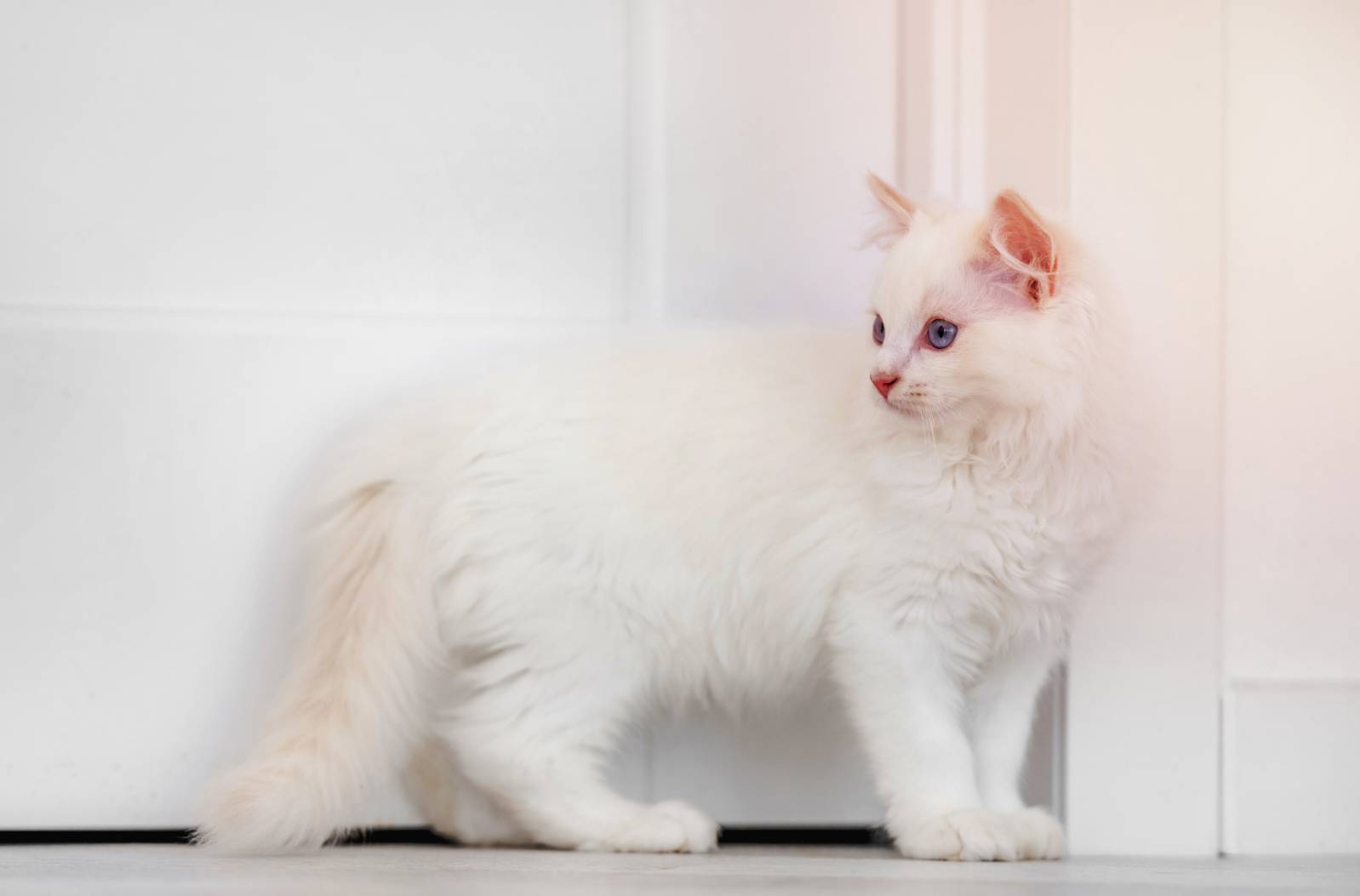
In this article, we present the 10 best water bowls for cats, carefully curated to meet the needs of our feline friends. From whisker-friendly designs, durable materials, and affordable prices, we highlight the features that make these bowls stand out. Say goodbye to dehydration concerns and discover the ideal water bowl for your beloved cat!
A Quick Comparison of Our Favorites of 2024
| Image | Product | Details | ||
|---|---|---|---|---|
| Best Overall |
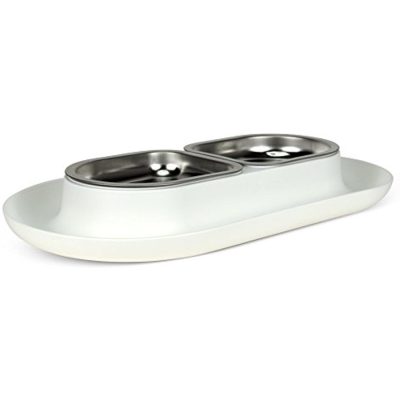
|
Hepper NomNom Bowl |
|
CHECK PRICE |
| Budget Buy |
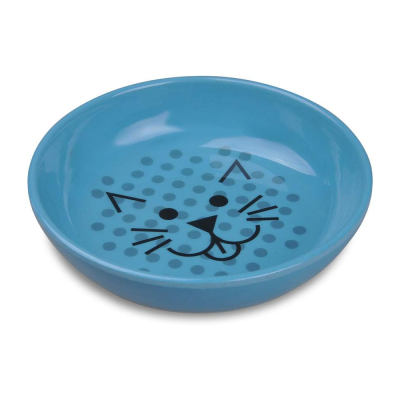
|
Van Ness Ecoware Non-Skid Cat Dish |
|
CHECK PRICE |

|
Ethical Pet Stoneware Crock Pet Dish |
|
CHECK PRICE | |
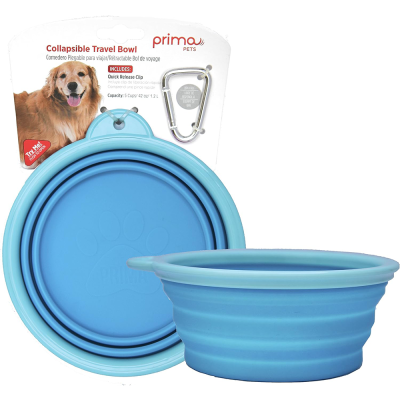
|
Prima Pets Collapsible Travel Bowl with Carabiner |
|
CHECK PRICE | |

|
Signature Housewares Coastal Fish Non-Skid Ceramic Cat Bowl |
|
CHECK PRICE |
The 10 Best Water Bowls for Cats
1. Hepper NomNom Cat Bowl – Best Overall
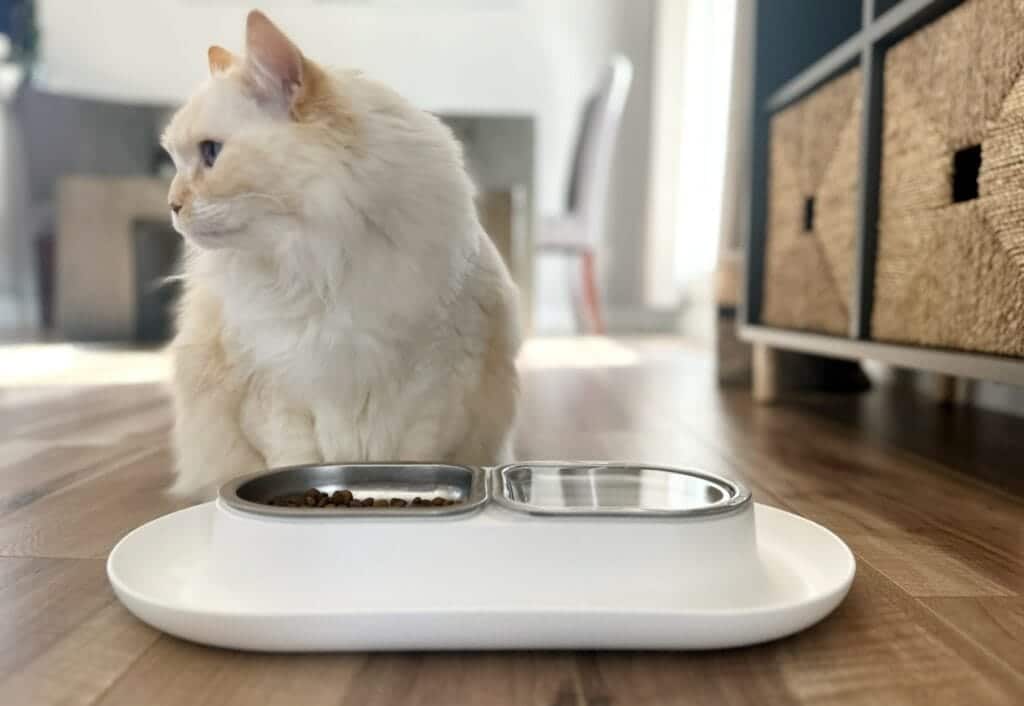
The Hepper NomNom Cat Bowl is our best overall pick for the ultimate water bowl for cats! This exceptional product stands head and shoulders above the rest with its remarkable features and unrivaled functionality.
The elevated and angled design ensures that your feline friend maintains a comfortable and natural drinking posture, reducing strain on their neck. With its wide and shallow shape, it alleviates whisker fatigue and prevents messy spills, granting easy access to water. The non-slip base keeps the bowl steady during enthusiastic drinking sessions.
Plus, the removable stainless steel liner makes cleaning a breeze. Not only is the Hepper NomNom Cat Bowl an epitome of practicality, but it also boasts a sleek and modern design that will elevate your cat’s hydration experience to new heights!
At Catster, we’ve admired Hepper for many years, and decided to take a controlling ownership interest, so that we could benefit from the outstanding designs of this cool cat company!
- Elevated and angled design for optimal drinking posture
- Wide and shallow shape to prevent whisker fatigue and spills
- Removable stainless-steel liner for easy cleaning
- Non-slip base for stability
- One tray, two dishes!
- Size may not be suitable for larger cats
- Cross-contamination is possible due to close proximity of bowls
2. Van Ness Ecoware Non-Skid Cat Dish – Budget Buy
The Van Ness EcoWare Non-Skid Cat Dish is the epitome of value for money, standing out as the best choice for an affordable yet high-quality water bowl for cats. This product offers exceptional features without breaking the bank.
Crafted from eco-friendly materials, it is not only durable but also environmentally conscious. The non-skid base ensures stability, preventing unnecessary spills during mealtime. It has a wide and shallow design that allows easy access to water, catering to cats of various sizes.
Additionally, the bowl is dishwasher-safe, making cleaning a breeze. With its affordable price point, the Van Ness EcoWare Non-Skid Cat Dish is the best cat bowl for the money while still prioritizing your cat’s hydration needs.
- Affordable price point
- Eco-friendly materials
- Non-skid base for stability
- Wide and shallow design for easy access to water
- Dishwasher safe
- May not have the same level of durability as higher-priced options
3. Ethical Pet Stoneware Crock Pet Dish

Another good choice in water bowls for cats is the Ethical Pet Stoneware Crock Pet Dish. This exquisite product stands in a league of its own, offering unparalleled quality and features.
Crafted from high-quality stoneware, it exudes a simple but solid appearance while ensuring durability and longevity. The heavy-weight construction adds stability and prevents tipping or sliding during drinking sessions. With its easy-to-clean surface and dishwasher-safe convenience, maintaining hygiene is a breeze.
The wide and shallow design provides a comfortable and stress-free drinking experience, particularly for cats with sensitive whiskers. The Ethical Pet Stoneware Crock Pet Dish is the epitome of opulence, offering your feline companion a water bowl that combines functionality, style, and good quality.
- Quality stoneware material
- Heavy weight for stability
- Wide and shallow shape for comfort
- Easy to clean and dishwasher safe
- Higher price point than other options
- Risk of breakage if dropped
4. Prima Pets Collapsible Travel Bowl with Carabiner

The Prima Pets Collapsible Travel Bowl is a versatile and practical solution for on-the-go pet hydration. This product is designed with convenience in mind, featuring a collapsible design that allows for easy storage and portability.
Made from durable and food-grade silicone, it is both safe and long-lasting. Cleaning is a breeze, as the bowl is dishwasher safe or can be rinsed quickly with water. The bowl expands to hold a generous amount of water, providing your furry friend with hydration whenever they need it.
The compact size and lightweight nature make it perfect for travel, outdoor adventures, or simply keeping in your bag for emergencies. The Prima Pets Collapsible Travel Bowl is a must-have accessory for pet owners who prioritize convenience and hydration on the go!
- Collapsible design for portability and storage
- Compact and lightweight
- Durable food-grade silicone construction
- Easy to clean, dishwasher safe
- Not suitable for long-term use
- Not as stable as traditional bowls
- Capacity is limited due to portable and compact nature
5. Signature Housewares Coastal Fish Non-Skid Ceramic Cat Bowl
Introducing the Signature Housewares Coastal Fish Non-Skid Cat Bowl, a charming and functional choice for cat owners. This bowl stands out with its delightful coastal fish design, adding a touch of whimsy to your cat’s mealtime.
Crafted from high-quality, non-toxic ceramic, it ensures durability and safety while also remaining easy to clean and dishwasher safe. The non-skid bottom prevents the bowl from sliding or tipping over, providing stability during feeding. The wide and shallow shape of the bowl allows for easy access to food or water, making it comfortable for cats of all sizes.
The Signature Housewares Coastal Fish Non-Skid Cat Bowl combines style, functionality, and safety to enhance your cat’s dining experience.
- Charming design
- Durable and non-toxic ceramic material
- Non-skid bottom for stability
- Easy to clean and dishwasher safe
- Ceramic may chip or break if mishandled
6. K&H Pet Products Thermal Bowl
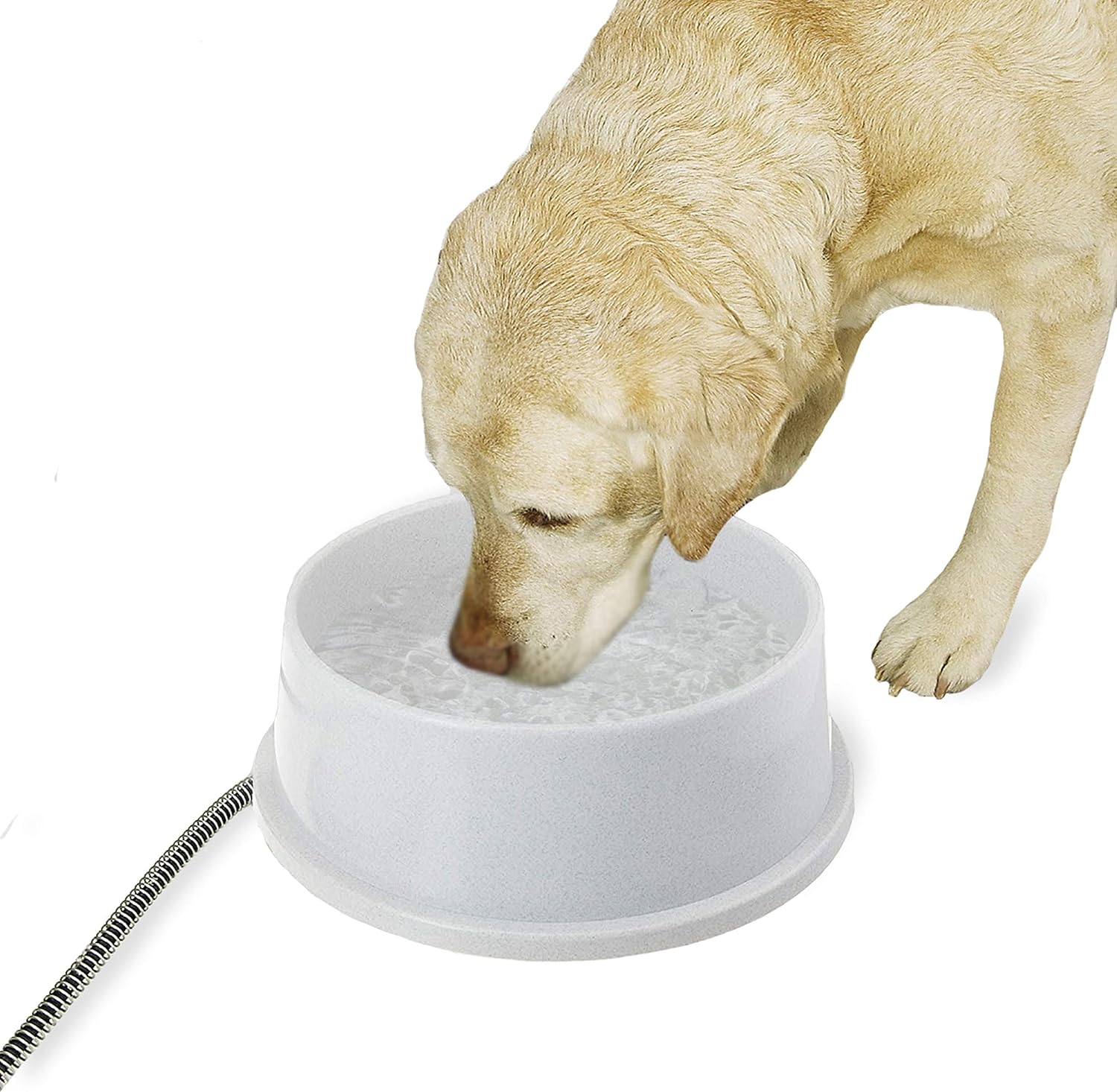
The K&H Pet Products Thermal Bowl is the ultimate solution for outdoor pet hydration. This bowl’s standout feature is its innovative thermal design which prevents water from freezing in cold weather, ensuring that your furry friend always has access to fresh water, even in freezing temperatures.
The bowl contains a thermostatically controlled heating element that activates only when needed, keeping the water at an optimal temperature. With a generous capacity and a sturdy construction, it is perfect for outdoor use. The K&H Pet Products Thermal Bowl is a reliable and convenient option for pet owners who want to ensure their pets stay hydrated, even in chilly environments.
- Unique thermal design that prevents water from freezing
- Thermostatically controlled heating element for optimal water temperature
- Provides access to fresh water in cold weather
- Requires access to an electrical outlet
7. Loving Pets Stainless Steel No-Tip Pet Bowl

The Loving Pets Stainless Steel No-Tip Pet Bowl is a reliable and practical choice for pet owners. Crafted from high-quality stainless steel, this bowl is durable, easy to clean, and resistant to rust and scratches. The wide and shallow design provides easy access to food or water, making it comfortable for pets. The rubber base prevents tipping or sliding, ensuring stability during mealtimes.
With its sleek and polished appearance, the Loving Pets Stainless Steel No-Tip Pet Bowl is not only functional but also adds a touch of sophistication to your pet’s dining experience.
- High-quality stainless steel construction
- Durable, easy to clean, and rust-resistant
- Rubber base for stability
- Sleek and polished design
- Not suitable for pets who are prone to chewing on rubber
8. Petmate Double Diner Plastic Dog & Cat Bowl
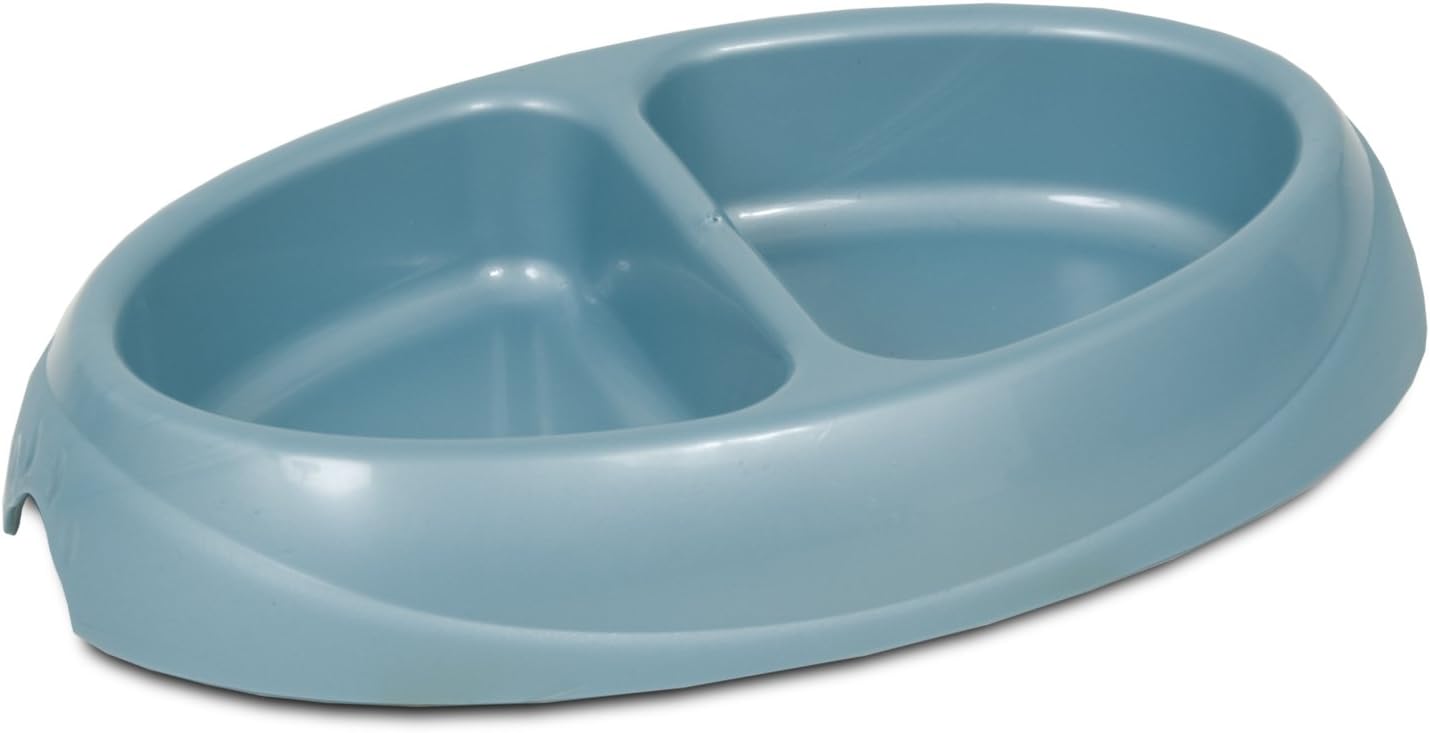
The Petmate Double Diner Plastic Dog & Cat Bowl offers a convenient and versatile feeding solution for pets. This unique product features two separate bowls, allowing you to serve food and water simultaneously.
Crafted from durable and lightweight plastic, it is easy to clean and resistant to scratches. The elevated design promotes better digestion and reduces strain on your pet’s neck. With its non-skid base, the bowls stay securely in place during mealtime.
The Petmate Double Diner Plastic Dog & Cat Bowl is a practical choice for pet owners seeking a functional and efficient feeding option for their furry companions.
- Two separate bowls for serving food and water
- Durable and lightweight plastic construction
- Easy to clean and resistant to scratches
- Plastic may not be suitable for pets with plastic allergies
- May not be as stable as bowls made from other materials
9. Frisco Fish Print Non-Skid Stainless-Steel Cat Bowl
The Frisco Fish Print Non-Skid Stainless-Steel Cat Bowl combines style and functionality in one package. Made from durable stainless steel, this bowl is resistant to rust, scratches, and stains, ensuring long-lasting use. The non-skid base prevents sliding and tipping during mealtime, adding stability and reducing mess.
With its charming fish print design, it adds a playful touch to your cat’s feeding area. Easy to clean and dishwasher safe, the Frisco Fish Print Non-Skid Stainless-Steel Cat Bowl is a reliable choice for cat owners who want a durable and attractive bowl for their furry friends!
- Durable stainless-steel construction
- Resistant to rust, scratches, and stains
- Charming fish print design
- Easy to clean and dishwasher safe
- More expensive compared to other stainless-steel options
- Fish print may not be suitable for all aesthetics
10. Petmate Pearl Replendish Waterer

The Petmate Pearl Replendish Waterer offers a unique and convenient way to ensure your pet has a constant supply of fresh water. Unlike traditional bowls, this waterer features a gravity-fed design that automatically refills the water bowl as your pet drinks.
With a large capacity, it is suitable for both cats and dogs of various sizes. The translucent pearl-colored bottle allows you to easily monitor the water level, and the wide-mouth bottle opening makes refilling a breeze. The waterer also includes a charcoal filter that helps remove impurities and improve the taste of the water. The Petmate Pearl Replendish Waterer is a practical and hassle-free solution for keeping your pet hydrated.
- Gravity-fed design automatically refills the water bowl
- Large capacity suitable for both cats and dogs
- The translucent bottle allows easy monitoring of water-level
- Charcoal filter helps remove impurities
- Requires regular cleaning
- Bulkier than traditional water bowls
Buyer’s Guide: Choosing the Best Water Bowls for Cats
As a responsible cat owner, it is essential to ensure that your feline friend stays hydrated. Adequate hydration is crucial for maintaining your cat’s overall health and well-being.
Cats’ Hydration Needs and Drinking Habits
Cats, like all living creatures, require water to survive. However, unlike some other animals, cats have a relatively low thirst drive. This can be attributed to their evolutionary origins as desert-dwelling animals. Cats have a natural inclination to obtain moisture from their prey rather than rely solely on drinking water. As a result, they may not consume enough water from a bowl if it is not appealing to them.
While cats may not have a strong thirst drive, it is crucial to provide them with a readily available water source. A dedicated water bowl allows cats to hydrate at their convenience, ensuring they receive adequate water intake throughout the day. A proper water bowl encourages healthy drinking habits and helps prevent dehydration, especially in dry environments or during hot weather.
Additional Things to Consider When Choosing a Water Bowl
When choosing a water bowl for your cat, it’s important to consider various factors to ensure it meets your cat’s needs and preferences. Here are a few basic things to consider:
Size
The size of the water bowl is crucial for your cat’s comfort. Choose a water bowl that is appropriately sized for your cat. It should be wide enough for their whiskers to comfortably fit without touching the sides. A bowl that is too small may lead to frustration or discomfort, discouraging your cat from drinking.
Whisker Fatigue
Whisker fatigue occurs when a cat’s sensitive whiskers are overstimulated. Some cats are more prone to experiencing this discomfort than others. To alleviate whisker fatigue, consider using shallow or wide bowls that allow your cat to drink without their whiskers touching the sides. This provides a more comfortable and stress-free drinking experience for your feline friend.
Plastic Material
Plastic bowls are a common choice due to their affordability and lightweight nature. However, there are potential drawbacks to using plastic bowls. Some cats may develop allergies to certain types of plastics, leading to skin irritation or other health issues.
Additionally, over time, plastic bowls can develop scratches on their surface, creating crevices that can harbor bacteria and be difficult to clean thoroughly.
If you choose a plastic bowl, ensure it is made from food-grade, BPA-free material to minimize the risk of toxins leaching into the water. Regularly replacing the plastic bowl can also help maintain cleanliness and hygiene.
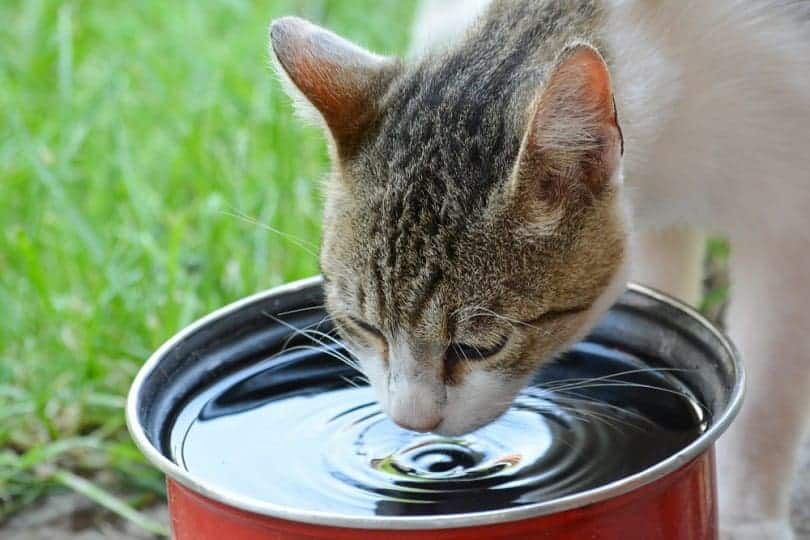
Ceramic Material
Ceramic bowls are a popular option among cat owners. They are sturdy, hygienic, and easy to clean. Ceramic bowls are resistant to scratches and do not harbor bacteria as readily as plastic bowls.
Their weight also provides stability, reducing the chances of tipping over during enthusiastic drinking sessions. However, it’s essential to choose a ceramic bowl that is lead-free and has a smooth glaze to ensure the safety of your cat.
Stainless Steel Material
Stainless steel bowls offer several advantages for cat owners. They are highly durable, resistant to scratches, and dishwasher-safe. Stainless steel does not retain odors, ensuring that the water remains fresh and appealing to your cat.
Moreover, stainless steel is an excellent option for cats with plastic allergies, as it eliminates the risk of allergic reactions associated with plastic materials. It is also non-porous, reducing the likelihood of bacterial growth.
Keeping Your Feline Friend Hydrated
Keeping your cat properly hydrated is vital for their overall health and well-being. In addition to selecting the right water bowl, there are a few other strategies you can employ to encourage your cat to drink an adequate amount of water.
Access In Multiple Locations
Cats may be more inclined to drink water if it is easily accessible to them. Consider placing water bowls in different areas of your home, especially in multi-level homes or if you have multiple cats. This ensures that your cat can find water conveniently, regardless of where they are in the house. It also reduces the chances of them becoming dehydrated due to limited access to water.
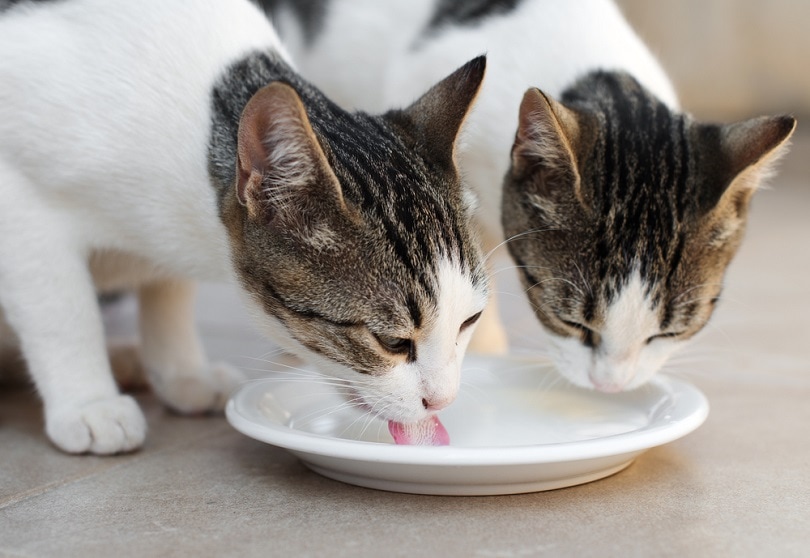
Providing Fresh and Clean Water
Cats prefer fresh, clean water. Just like humans, they are more likely to drink water that is appealing and free from any contaminants. Make it a habit to change your cat’s water regularly, ideally at least once a day, to keep it fresh.
Clean the water bowl thoroughly with mild soap and water to remove any bacteria or residue. Avoid using strong detergents or cleaning agents that may leave behind a residue or an odor that could deter your cat from drinking.
Use of Water Fountains
Consider investing in a cat water fountain as an alternative to a traditional water bowl. Cats are often attracted to flowing water, and a water fountain can simulate the experience of drinking from a natural water source. The movement of water in a fountain may entice your cat to drink more.
In addition, the continuous circulation of water in a fountain helps keep it oxygenated and fresh, making it more appealing to your cat. Some water fountains also incorporate filters to remove impurities and improve water quality.
Remember, while providing a suitable water bowl or water fountain is essential, it is equally important to observe your cat’s water intake and monitor their overall hydration levels. Signs of dehydration in cats include lethargy, sunken eyes, dry gums, and loss of skin elasticity. If you suspect your cat is dehydrated, consult your veterinarian for guidance and assistance.

Conclusion
With all the options available, choosing the best water bowl for your furry companion can be a challenge. We hope that our reviews for the 10 best water bowls for cats will help you choose the best bowl for your furry friend.
Our top pick, the Hepper NomNom Bowl, is our ultimate mix of quality and dependability. For the affordable option without sacrificing quality, the Van Ness EcoWare Non-Skid Cat Dish provides your cat with an eco-friendly and reliable water dish.
Our top 10 best water bowls are meant to serve as a guide. So, of course, the decision rests with you and your cat’s needs. Just remember to research the material, features, size, and quality of your water bowl to ensure that you are choosing the best option for your cat!
Featured Image Credit: birgl, Pixabay
Contents
- A Quick Comparison of Our Favorites of 2024
- The 10 Best Water Bowls for Cats
- 1. Hepper NomNom Cat Bowl – Best Overall
- 2. Van Ness Ecoware Non-Skid Cat Dish – Budget Buy
- 3. Ethical Pet Stoneware Crock Pet Dish
- 4. Prima Pets Collapsible Travel Bowl with Carabiner
- 5. Signature Housewares Coastal Fish Non-Skid Ceramic Cat Bowl
- 6. K&H Pet Products Thermal Bowl
- 7. Loving Pets Stainless Steel No-Tip Pet Bowl
- 8. Petmate Double Diner Plastic Dog & Cat Bowl
- 9. Frisco Fish Print Non-Skid Stainless-Steel Cat Bowl
- 10. Petmate Pearl Replendish Waterer
- Buyer’s Guide: Choosing the Best Water Bowls for Cats
- Cats’ Hydration Needs and Drinking Habits
- Additional Things to Consider When Choosing a Water Bowl
- Keeping Your Feline Friend Hydrated
- Conclusion







